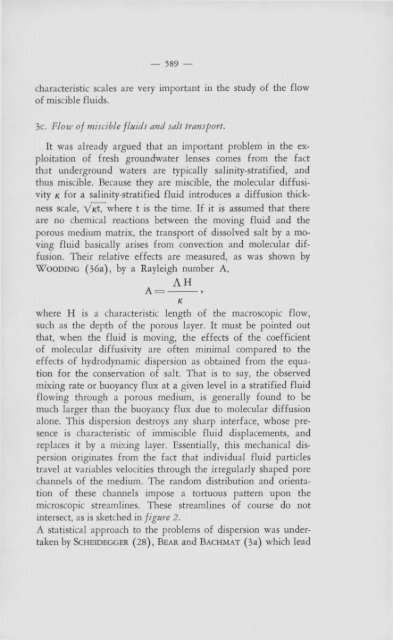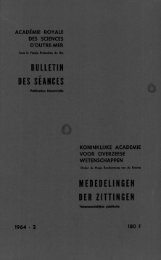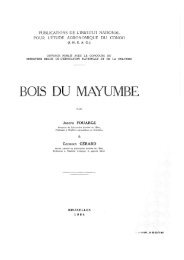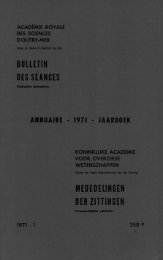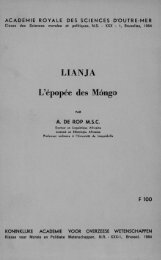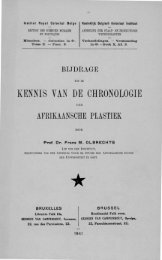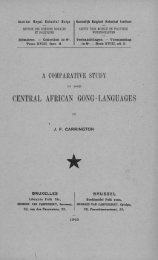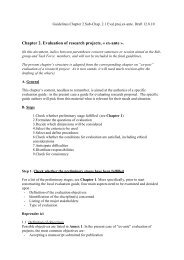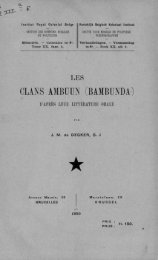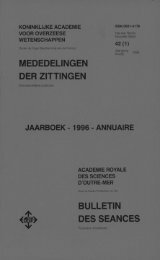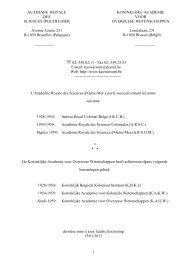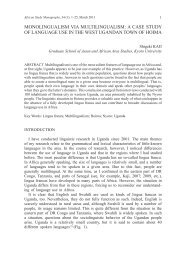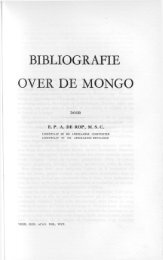(1973) n°3 - Royal Academy for Overseas Sciences
(1973) n°3 - Royal Academy for Overseas Sciences
(1973) n°3 - Royal Academy for Overseas Sciences
You also want an ePaper? Increase the reach of your titles
YUMPU automatically turns print PDFs into web optimized ePapers that Google loves.
— 589 —<br />
characteristic scales are very important in the study of the flow<br />
of miscible fluids.<br />
3c. Plow of miscible fluids and salt transport.<br />
It was already argued that an important problem in the exploitation<br />
of fresh groundwater lenses comes from the fact<br />
that underground waters are typically salinity-stratified, and<br />
thus miscible. Because they are miscible, the molecular diffusi-<br />
vity k <strong>for</strong> a salinity-stratified fluid introduces a diffusion thickness<br />
scale, Vfct, where t is the time. If it is assumed that there<br />
are no chemical reactions between the moving fluid and the<br />
porous medium matrix, the transport of dissolved salt by a moving<br />
fluid basically arises from convection and molecular diffusion.<br />
Their relative effects are measured, as was shown by<br />
W o o d in g ( 3 6 a ) , by a Rayleigh number A,<br />
A H<br />
A = --------- »<br />
K<br />
where H is a characteristic length of the macroscopic flow,<br />
such as the depth of the porous layer. It must be pointed out<br />
that, when the fluid is moving, the effects of the coefficient<br />
of molecular diffusivity are often minimal compared to the<br />
effects of hydrodynamic dispersion as obtained from the equation<br />
<strong>for</strong> the conservation of salt. That is to say, the observed<br />
mixing rate or buoyancy flux at a given level in a stratified fluid<br />
flowing through a porous medium, is generally found to be<br />
much larger than the buoyancy flux due to molecular diffusion<br />
alone. This dispersion destroys any sharp interface, whose presence<br />
is characteristic of immiscible fluid displacements, and<br />
replaces it by a mixing layer. Essentially, this mechanical dispersion<br />
originates from the fact that individual fluid particles<br />
travel at variables velocities through the irregularly shaped pore<br />
channels of the medium. The random distribution and orientation<br />
of these channels impose a tortuous pattern upon the<br />
microscopic streamlines. These streamlines of course do not<br />
intersect, as is sketched in figure 2.<br />
A statistical approach to the problems of dispersion was undertaken<br />
by Sc h e id e g g e r ( 2 8 ) , B ear and B a c h m a t (3 a ) which lead


